Sustainable things to do in Lisbon
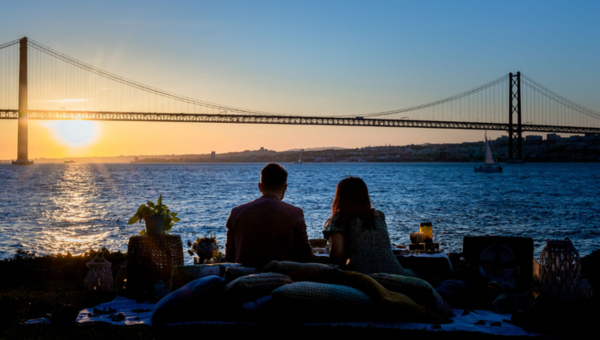
When we travel, particularly at an international level, it’s important to think about our actions and how we can be more responsible travelers. Tourism naturally has an impact, both environmental and at a human level, affecting the places, the lifestyle of people, and the ecosystem.
If you are planning to travel to Portugal soon and would like to experience all the great things Lisbon has to offer while minimizing your negative impact on the environment, we have some tips which can help you make the most of your time with us, while actually having a positive effect locally.
To begin with, if your schedule allows, avoid visiting Lisbon during peak season. As we have explored before, there is more than just one perfect time to travel to Lisbon, because there are interesting things going on all year long, and the moderate weather will guarantee a pleasant stay independently of the time when you decide to come. If you associate this with consuming local products and services while you are here, you would have already been doing a great deal as an active conscious traveler.
You don’t need to fully embrace ecotourism to become a more sustainable traveler. Whenever you can, choose to do the same thing you already had in mind doing but in a more sustainable way. Buying less material products and leaning more towards experiencing things is a great place to start! But we have more tips for you to experience Lisbon in a sustainable way, which will not compromise the fun you’ll have in the Portuguese capital:
1. Choose eco-friendly accommodation
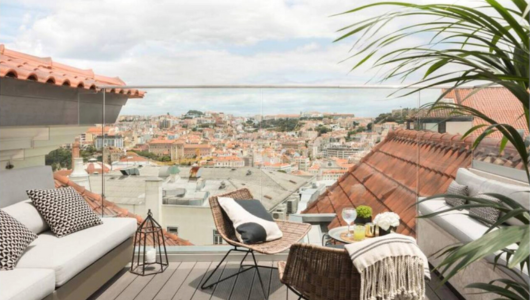
We will not get into how you make your way to Lisbon, as that would be highly variable depending where in the world you are coming from. But, once you are here, there’s such a wide range of establishments that, if possible, we would encourage you to book your stay at an eco-friendly hotel.
There are hotels big and small with certifications which guarantee that the company is putting an effort into minimizing their negative impact on the environment, namely regarding the types of materials they use, their usage of water, and so much more. Websites such as Green Guides or Eco Hotels do a good job at helping you to narrow down the options as, with some many places to choose from, it can sometimes get a tad overwhelming.
Some of our favorite eco minded hotels in Lisbon include Inspira Liberdade Boutique Hotel (Rua de Santa Marta 48), which has a Green Globe certification, and does a lot to ensure you can have an ultra comfortable luxurious stay, without it having to be at the expense of the environment. Not as pricey, Neya Lisboa Eco Hotel (Rua de Dona Estefânia 71) is also a great option. We love that they heat the water for their rooms with solar panels, use tap sensors to avoid water waste and not only do they provide guests with bikes to get around Lisbon, they even encourage their staff to cycle to work too.
2. Take advantage of the public transportation network
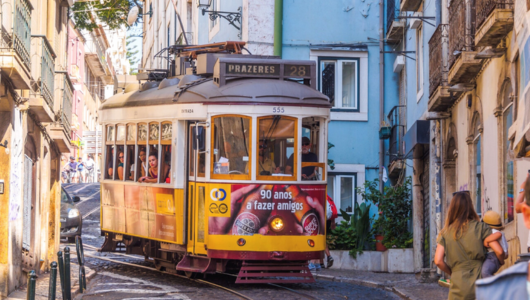
Unless you are planning to take a day trip from Lisbon, and even then it would certainly depend where you would like to go, there is no need to rent a car when you are in the city. In fact, having a car in downtown Lisbon might turn into a nightmare, as roads get busy and parking, unless you are used to ultra tight spots on steep roads, can be very challenging indeed!
That being said, you can rely on Lisbon’s public transportation network to get around, not only downtown Lisbon, but most of the interesting places you may want to get to from the city, including the south bank of the river. When you purchase a zapping card from a machine at the metro station, for example, you can load it up to spend on trips using the local buses, trams, subway, boats to the other side of the river, and trains, such as those to Sintra or Cascais. Using Lisbon’s public transport you can get as far as Ericeira up north, or Setúbal and Arrábida towards the south.
3. Eat local food
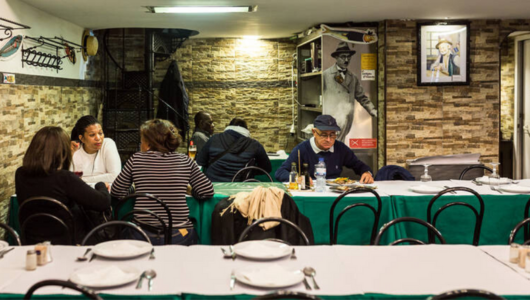
Eating local food can get you closer to the culture and lifestyle of a given place and, while at it, you will be minimizing your negative impact on the environment. But how do you know that you are getting local ingredients when you sit down at a restaurant to eat? In the context of Lisbon, we would generally opt for simple eateries, locally known as tascas. These are down-to-earth restaurants which, as a general rule of thumb, will make good use of local ingredients and what’s in season. So, without having to make things complicated, tascas and taverns, even contemporary taverns, tend to be a good option.
Of course you could also do research and go specifically to restaurants which you know use local and seasonal products. Some of our favorite sustainable restaurants in Lisbon include Prado (Tv. Pedras Negras 2), where chef António Galapito and his team sure know how to highlight some of the best seasonal products from around the country, and SEM Restaurante & Wine Bar (Rua das Escolas Gerais 120), where Lara Espírito Santo and George Mcleod cook with a strong environmental conscious and, while at it, prepare incredibly delicious home made fermented products too.
Having a plant-based meal every now and then can also be a great idea to help you reduce your carbon footprint, as long as you are doing so at restaurants which indeed use local products. If while in Portugal you’d like to try vegetarian food but that is indeed representative of Portuguese cuisine, we would certainly recommend booking a table at Ao 26 Vegan Food Project (Rua Horta Seca 5), which is one of the best vegan Portuguese food restaurants in Lisbon.
4. Drink Portuguese wine

To protect the environment you have to drink Portuguese wine – what a sacrifice, right? Jokes aside, when in Portugal, eat Portuguese food and drink local wine. It’s as simple as that! And the same goes for other drinks, such as beer and even soft drinks. It just wouldn’t make sense to consume products which have been imported from other corners of the world, when we locally have a remarkable range of drinks and Portuguese wine is not only varied and of the highest quality, it can also offer incredible value for money too.
Before you start sipping away, read our quick introduction to Portugal’s wine regions, so that a little context can help you elevate your wine tasting experience. Wine in Portugal is ubiquitous – you can get wine at restaurants, of course, but also cafes and even pastry shops. We have specialized wine stores but any given corner supermarket will also have a decent range of Portuguese wines.
For more specific choices, visit the best wine bars in Lisbon and, if you care about your impact above the average, or you’re simply curious to try, ask for natural wines, and those made with low-intervention processes. Don’t know where to even begin? Go to Black Sheep (Praça das Flores 62) where Bruna Ventura and Lucas Ferreira will be the greatest teachers and natural wine pourers you may ever come to know!
5. Explore Lisbon on foot
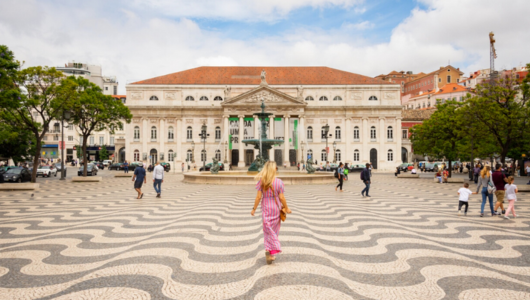
Not only is walking obviously more eco-friendly than driving around, there is no doubt that Lisbon is best explored on foot. Some of the most charming corners of our city can’t even be reached on wheels, so make sure you bring comfortable shoes, pack a refillable bottle of water (there are many water fountains in the city which will help you stay hydrated and tap water is good too!), and get ready to discover the secrets of the city of the seven hills.
Walking is particularly pleasant either by the river side (such as alongside Ribeira das Naus or in Bélem), but also in the oldest neighborhoods of Lisbon, like Alfama, Mouraria or Madragoa, known for their small alleys and several flights of stairs. Considering there are so many hills, it may get tiring, of course. But there are also many viewpoints known here as miradouros, where you can take a rest and soak up the wonderful views of the terracotta rooftops contrasting with the blue sky and the Tagus river in the horizon.
If you are planning to join an organized tour, give preference to walking tours. Our food and cultural experiences, for example, happen by foot only, and even though we cover a good portion of the city, we do so with time, at a moderate pace which the vast majority of people can easily keep up with, not to mention we eat and drink across several stops, so running low on energy is not even a question. Taste of Lisboa has recently been granted the Biosphere Sustainable Business Certification so, not only do we minimize our impact in terms of transportation, every aspect of our operation is aligned with the United Nations Sustainable Development Agenda for 2030, so that we can keep going in a way which makes sense for our city, its people and also our current and future guests.
6. Cycle from downtown Lisbon to Bélem

Cycling has become quite popular in Lisbon in recent years, as a means of transportation for local people, but also as a way of getting around while enjoying the surroundings, for travelers who are taking some time to explore our city.
When you first look at the topography of our city, with plenty of steep hills, the thought of going up and down powered only by your legs may sound a little intimidating. This is exactly why a lot of the bike rental services and cycling tour operators provide electric bicycles which you can take advantage of when things get too hard.
There are more and more cycling paths in central parts of the city but, for a leisurely time, we would recommend cycling from Cais do Sodré to Alcântara and, from there, you can keep going all the way to the monument district of Bélem, always on the cycling path. You’d be pedaling parallel to the river, with expansive views towards the south bank, and passing important landmarks of our city, particularly if you make it to Bélem, where you can always treat yourself to an original pastel de Bélem as a reward for all that cycling or, because you will for sure need it, to power you for the return trip!
7. Do a picnic at one of the city’s many parks

When the weather is pleasant, and by this we mean moderate and not way too hot as it gets during the peak summer months, doing a picnic is one of the best ways to enjoy Lisbon outdoors. The city has plenty of wonderful parks where you can sit in the grass and take it easy, while you nibble on some snacks or have a drink. You can even bring a beer or a bottle of wine if you’d like to, as drinking outdoors is legal in Portugal, and quite common too.
Some of our favorite parks in the central parts of Lisbon include Jardim da Estrela (Praça da Estrela 12) and Tapada das Necessidades (Calçada Necessidades). But sometimes we also like heading towards the newest part of town, Parque das Nações, namely to Jardim das Ondas (Passeio de Neptuno), which is very often overlooked by travelers.
If you’re planning for a sustainable picnic in Lisbon, we would recommend getting your supplies at local markets or shops which specialize in local products. Comida Independente (Rua Cais do Tojo 28) is always a safe bet, as they have a highly curated range of products from artisanal producers from all over the country. For snacks such as dry fruits, biscuits and more, whenever possible, buy at zero waste stores which minimize the use of disposable packaging, like Maria Granel, with shops in the neighborhoods of Alvalade and Campo de Ourique.
8. Spend a day at a beach near Lisbon
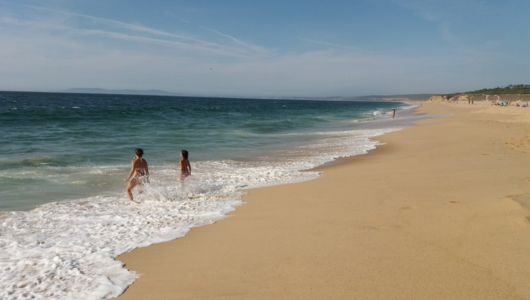
Lisbon locals eagerly await during the winter until the first sun rays of the early spring are strong enough so that we can take off our clothes and go sunbathing on the beach. We may or may not dip ourselves in the ocean right away as, let’s face it, the water isn’t that hot. But we sure love the beach in all its shapes and forms – it’s simply part of the local lifestyle!
You can easily get to the beach from central Lisbon, simply making good use of public transportation. The easiest beaches to get to from downtown would be those along the Cascais and Estoril coast, as they are all reachable by the CP operated train departing from Cais do Sodré – see the schedules here.
Take advantage of Lisbon’s natural activities, which do not cost a thing! And, while you’re at it, spend a day at the beach Portuguese style, to enjoy the seaside like us locals would do.
9. Hike in Arrábida Natural Park
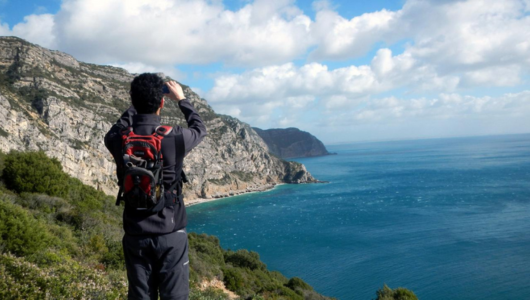
There are also stunning beaches within Arrábida, but this natural park is particularly wonderful for those into trekking and hiking. If you go spend time in the great outdoors of Arrábida, do pack some snacks and, above all, water, as there are not a lot of shops and facilities available in this natural protected area.
The variety of hiking trails in Arrábida can have you walk past grandiose mountains with expansive views towards the Atlantic, imposing monasteries from days gone by, and also archeological remains from the days of the Roman Empire, about 2000 years ago.
Serra da Arrábida offers dramatic scenery all around, something which can be enjoyed for free and responsibly, making for a great day out from Lisbon, close to nature, connected with the elements, and without necessarily having a bad impact on the environment. As they say: leave nothing but footprints!
10. Catch the sunset at one of Lisbon’s many viewpoints

They also say some of the greatest things in life are actually free, and the sentiment certainly applies to many of Lisbon’s best views. While our city has panoramic restaurants and rooftops bars which we would certainly recommend you visit during your trip, the truth is that some of the greatest vistas of our capital city can be enjoyed at public viewpoints, locally known as miradouros.
Us locals love going to these miradouros too. We do so particularly close to sunset time, to take a sit and have some me time, or some other times to chill with friends, often sharing a bottle of wine – once again, if you didn’t know it yet, you now know that drinking outdoors in Portugal is perfectly legal.
As long as you mind your trash when taking drinks or food to a viewpoint, admiring the sun going down outdoors has no impact on the environment whatsoever and, trust us when we say, some of the best photos you’ll get to click in Lisbon are bound to happen right here! If you don’t know which miradouro to choose amongst the city’s many options, check out some of our favorite viewpoints in Lisbon and pick the ones which tickle your fancy.
11. Buy eco-friendly souvenirs from Portugal
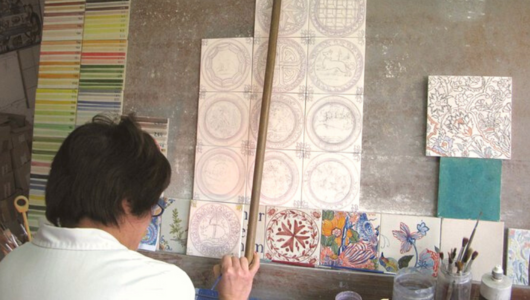
Generally speaking, we think some of the best gifts you can buy from Lisbon are actually edible souvenirs. No matter if they are more or less eco-friendly, these souvenirs have a clear purpose as they will be consumed, thus making them more useful from the get go, as compared to a merely decorative trinket which you could anyway buy pretty much anywhere else in the world.
No matter where you go in the world, we would always recommend looking for eco-friendly souvenirs. In Portugal, thankfully, we have a good range of options which not only have a limited impact on the environment, they are also very representative of our culture and sense of aesthetics. The first example which comes to mind would be azulejos, the colorful tiles you’ll see decorating many building facades all over Lisbon. These make beautiful additions to your home, whether it’s hanging on the wall, on a frame, or even as glass coasters. You can buy pretty tiles in shops and markets all over Lisbon, or even go and make your own during a tile painting workshop – does it get more sustainable than making your own souvenirs from scratch in an artisanal way?
Another good Portuguese sustainable option for gifts would be cork based products, ranging from hand bags, shoes and other fashion accessories, to home decor and kitchen tools. Cork is incredibly versatile, water proof, long lasting and, let’s face it, if you buy yourself a pair of cork based sneakers you will certainly stand out from the crowd back home!
Buying second hand souvenirs can also be great, for the environment and for your pockets too. Street markets are ideal to hunt for bargains which are simultaneously unique things, making your gift potentially an even more special one. We recommend heading to Feira da Ladra (Campo de Santa Clara), which is a small market held every Tuesday and Saturday, from dawn to the early afternoon, with lots of small stalls and quite a variety of stuff.
Some great brands of sustainable products which would make a great souvenir from Lisbon, include:
Couve
For plant-based fashion and shoes.
📍Rua Maria 49B, 1170-210 Lisbon
NAE Vegan Shoes
Footwear which is not only made with vegan materials but as many recycled elements as possible too.
📍Largo Trindade Coelho 17, 1200-339 Lisbon
ISTO.
Portuguese fashion, made entirely with 100% organic cotton.
📍Praça do Príncipe Real 26, 1250-184 Lisbon
📍Rua Nova da Trindade 22E, 1200-235 Lisbon
📍Rua Ten. Ferreira Durão 70, 1350-318 Lisbon
Boa Safra
Interior design decorative items with a minimalistic aesthetic and sustainably sourced wood and other materials.
📍Praça do Príncipe Real 26, 1250-184 Lisbon
Stró
Sustainable textiles, including high quality Portuguese wool.
📍Rua Nova de São Mamede 66, 1250-173 Lisbon
📍Rua da Escola Politécnica 80A e 80B, 1250-102 Lisbon
Do you have more suggestions on how to travel around Lisbon in a more sustainable manner? We’d love to hear from you via Instagram! Tag us: @tasteoflisboa #tasteoflisboa
Feed your curiosity on Portuguese food culture:
Lisbon and its sustainable way of living
10 ways to enjoy Lisbon outdoors
10 ways to feel like a local in Lisbon
Real people, real food. Come with us to where the locals go.
Signup for our natively curated food & cultural experiences.
Follow us for more at Instagram, Twitter e Youtube
